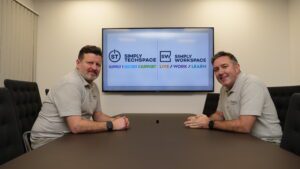Every business wants to improve its bank balance, and probably sees increased orders or contracts as the way to achieve that end. Growth is, of course, an important factor, but sometimes, it’s simply good business practice that results in more profit, more control and enables growth. A strategic financial partner can assist in outlining straightforward processes that make all the difference. Annie Thompson, CEO of Cornerstone FD in Northamptonshire explains, step by step:
Costs
So many business owners spend money on things they don’t use or need. The odd £100 here and there isn’t a lot, but it all adds up. By going through every regular cost, direct debit and card purchase, taking a step back and asking yourself if you really need it, you can save hundreds, or even thousands of pounds a year without too much effort.
Cash
If you get to the end of the month and wonder where all the cash went, creating a cash-flow forecast can help. A cash-flow forecast is essentially a spreadsheet with projected income at the top and projected expenditure (it’s important to include everything, no matter how small) at the bottom, and a calculation to work out the difference and the bank balance at the end of each period.
A forecast will show you where the leaks are. It might be that all your costs all go out at the same point in the month, draining your balance temporarily. Perhaps you get to the VAT payment date and, because you’ve had a heavy month in other areas, it creates a bit of an issue. Maybe you’re paying all the costs on projects before the customer pays. Armed with this knowledge, you can begin to plan, and put additional funding lines in place.

Systems and processes
Systems and processes that aren’t right for the business can waste both time and money. Low value and repetitive tasks can be outsourced or automated. Do your systems talk to each other the way they should? Is the business using the functionalities in the most efficient and
effective ways?
Your time is valuable, as is that of your staff. There is plenty of industry specific software that can streamline and improve the effectiveness of the business, supporting scaleability without an added staff cost.
Protect the margin
‘Just sell more’ is never a good strategy if you’re not making enough profit. Some loss leaders might be necessary to win additional business, but it’s always worth reviewing all or a selected sample of your projects and working out the direct costs associated with each of them. It could be that you’re spending more on sub-contractors than you thought, or the material costs are racking up because you’re not being efficient with the buying process. All that happens when you ‘sell more’ is the numbers get bigger, but your profitability (and therefore cash flow) doesn’t.
Customers and suppliers
Review the number of days it takes for customers to pay you and for you to pay suppliers. A good place to start is to calculate the average days sales outstanding for each of your clients. It’s a good idea to ask your bookkeeper or accountant for help with this, but the formula is as follows:
The outstanding balance for that customer at the end of the period, divided by credit sales to that customer within the period, times by the number of days in the period.
This will show you the good and not so good payers. You can then compare this with how long you’re taking to pay suppliers and bring them more in line to suit your cash flow if needed.
If you find that you’re likely to run into trouble over the coming few weeks or months, you can start talking to your suppliers and setting up payment plans or more favourable terms. Never leave it until it’s too late, it will just make things worse.
Your accountant or bookkeeper should be able to help you with all of the above. Otherwise, please give Cornerstone FD a call for a confidential, no obligation chat.
Call 01908 429294 for more information.

CEO of
Cornerstone FD














